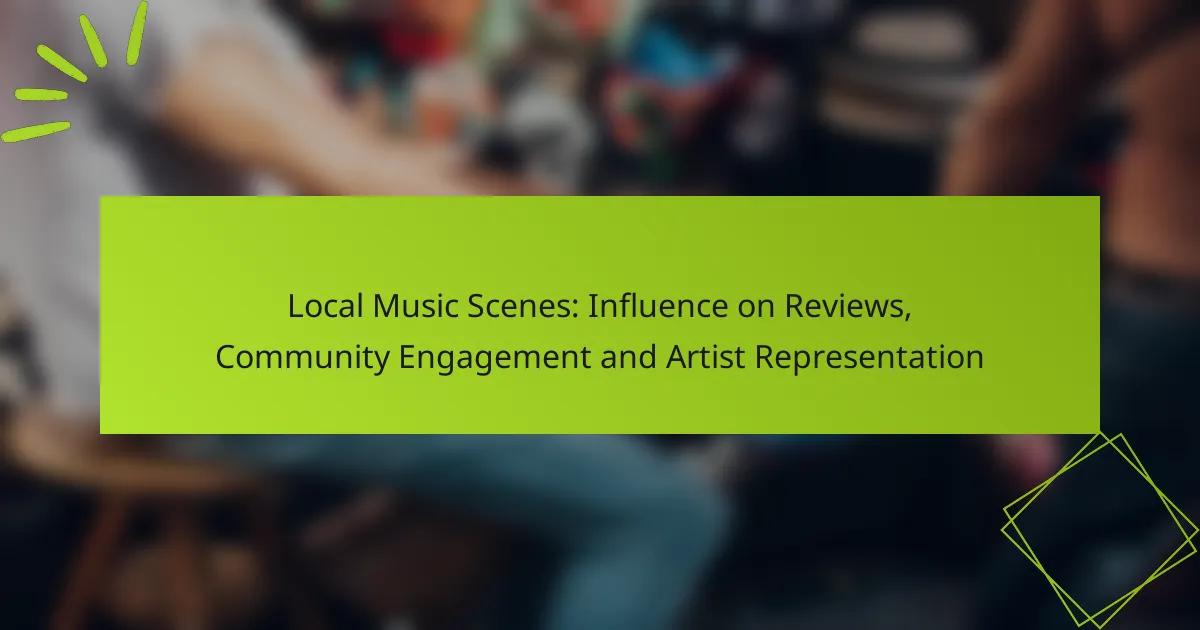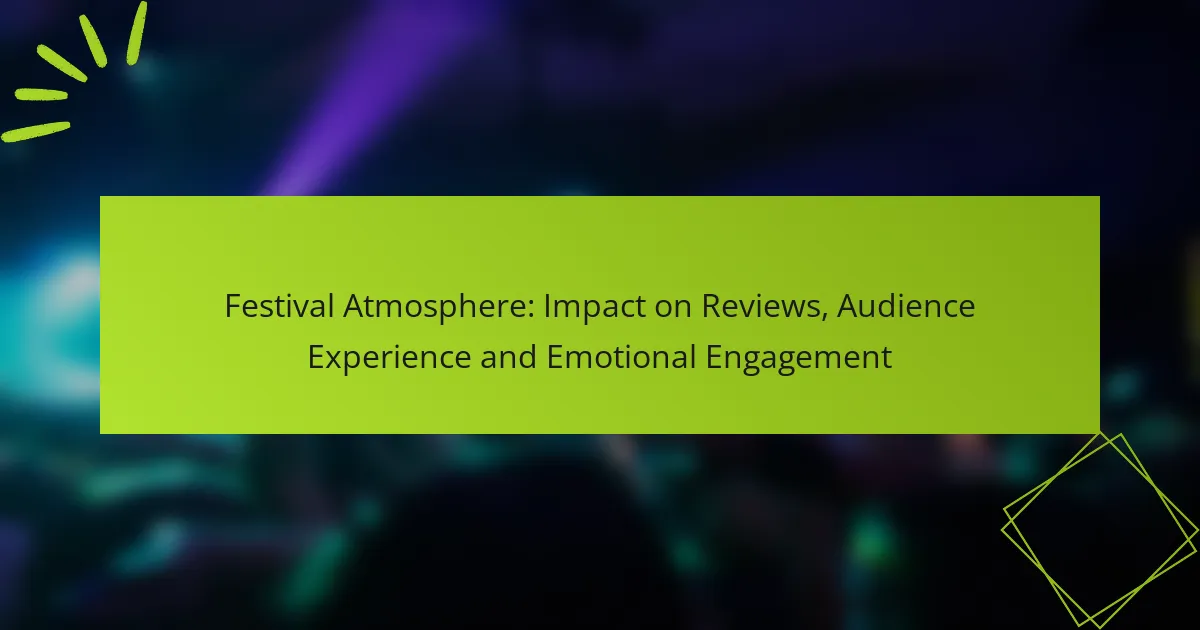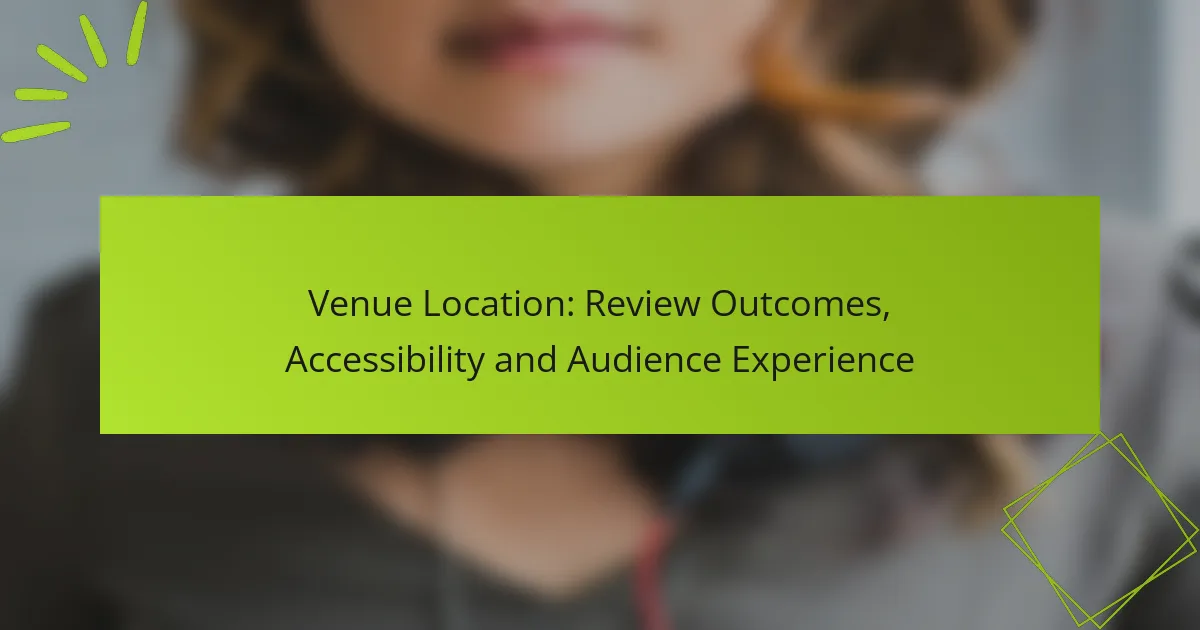Local music scenes play a vital role in shaping artist representation and fostering community engagement. By providing platforms for artists to connect with audiences, these scenes enhance visibility and credibility while influencing how music is perceived through reviews. Digital tools further amplify this interaction, creating vibrant networks that encourage collaboration and support among artists and fans alike.
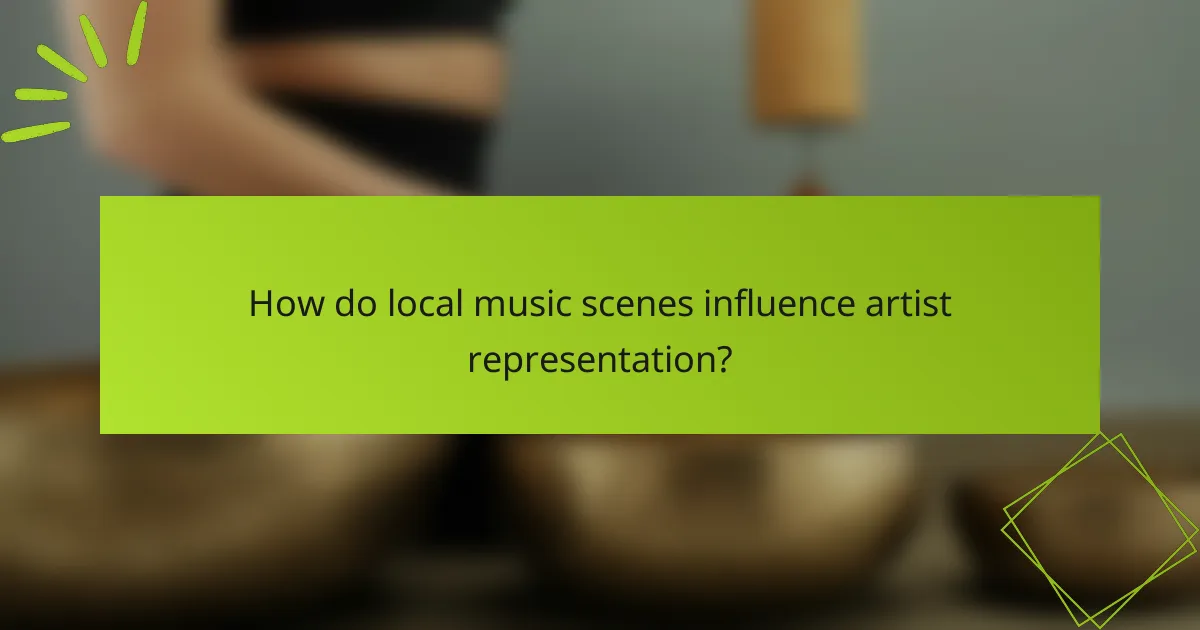
How do local music scenes influence artist representation?
Local music scenes significantly shape artist representation by fostering unique identities and connections within the community. These scenes provide platforms for artists to showcase their work, engage with audiences, and establish a supportive network that can enhance their visibility and credibility.
Community-driven platforms
Community-driven platforms play a crucial role in artist representation by allowing local musicians to share their music directly with audiences. Websites, social media groups, and local event listings serve as vital spaces for promoting gigs and new releases. These platforms often prioritize local talent, making it easier for artists to gain recognition within their own communities.
For instance, a local music blog might feature interviews and reviews of emerging artists, helping them build a following. Engaging with these platforms can lead to increased attendance at live shows and greater overall support from the community.
Local label support
Local labels often provide essential resources for artists, including funding, marketing, and distribution. These labels typically have a deep understanding of the local music scene, allowing them to tailor their strategies to effectively promote their artists. Collaborating with a local label can enhance an artist’s visibility and provide access to professional networks.
Many local labels offer services such as recording, promotion, and even booking shows, which can be invaluable for artists just starting out. By aligning with a label that shares their vision, artists can better navigate the complexities of the music industry.
Networking opportunities
Networking opportunities within local music scenes are vital for artist representation, as they facilitate connections with other musicians, industry professionals, and potential collaborators. Events like open mics, showcases, and music festivals provide platforms for artists to meet and engage with one another, fostering a sense of community.
Building relationships with other artists can lead to collaborative projects, joint performances, and mutual support, all of which can enhance an artist’s profile. Additionally, networking with industry professionals can open doors to management, booking agents, and other essential resources that can help elevate an artist’s career.
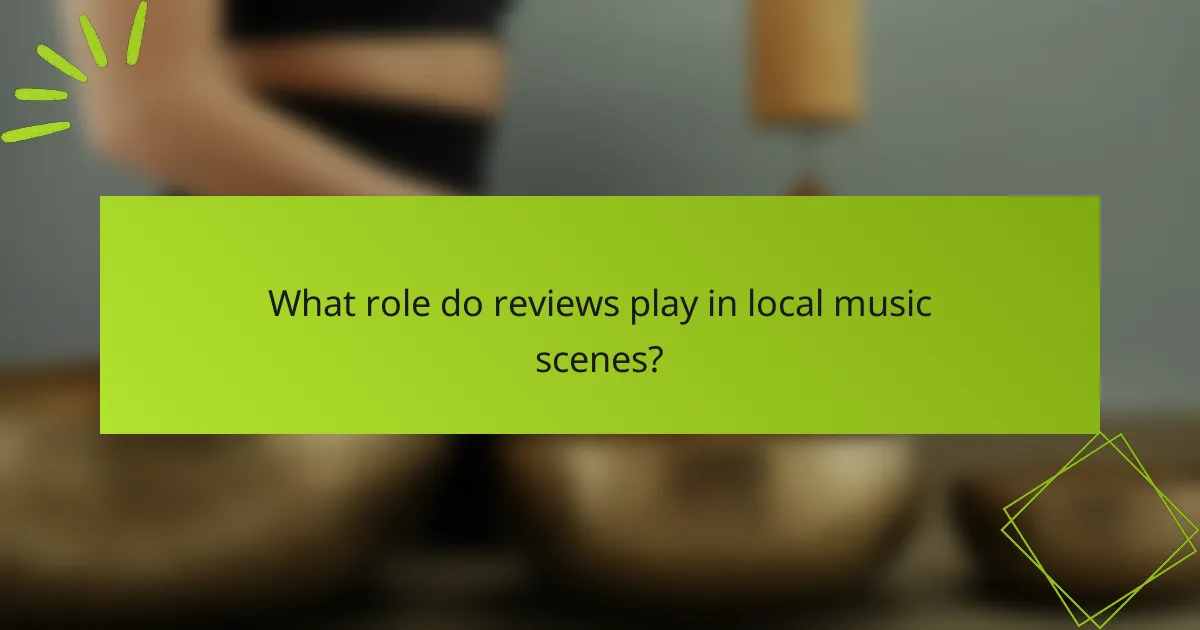
What role do reviews play in local music scenes?
Reviews are crucial in local music scenes as they shape artist visibility and influence audience perception. They serve as a bridge between musicians and potential fans, providing insights into the music and the artist’s identity.
Impact on artist visibility
Reviews can significantly enhance an artist’s visibility within their local music scene. Positive critiques often lead to increased attendance at shows, more social media followers, and opportunities for collaboration. Artists who receive consistent coverage in local publications or blogs are more likely to be recognized by larger platforms.
For instance, a favorable review in a well-regarded local magazine can elevate an emerging artist from obscurity to a sought-after performer. This visibility can translate into tangible benefits, such as invitations to festivals or opening slots for more established acts.
Influence on audience perception
Audience perception is heavily influenced by reviews, as they provide context and credibility to the music being presented. A well-written review can frame an artist’s work in a specific light, shaping how listeners interpret their sound and message. This can lead to a more engaged and informed audience.
Moreover, reviews often highlight unique aspects of an artist’s style or performance, which can resonate with local cultural values. For example, a review that emphasizes an artist’s connection to local themes or issues can foster a deeper emotional connection with the audience, encouraging community support and loyalty.
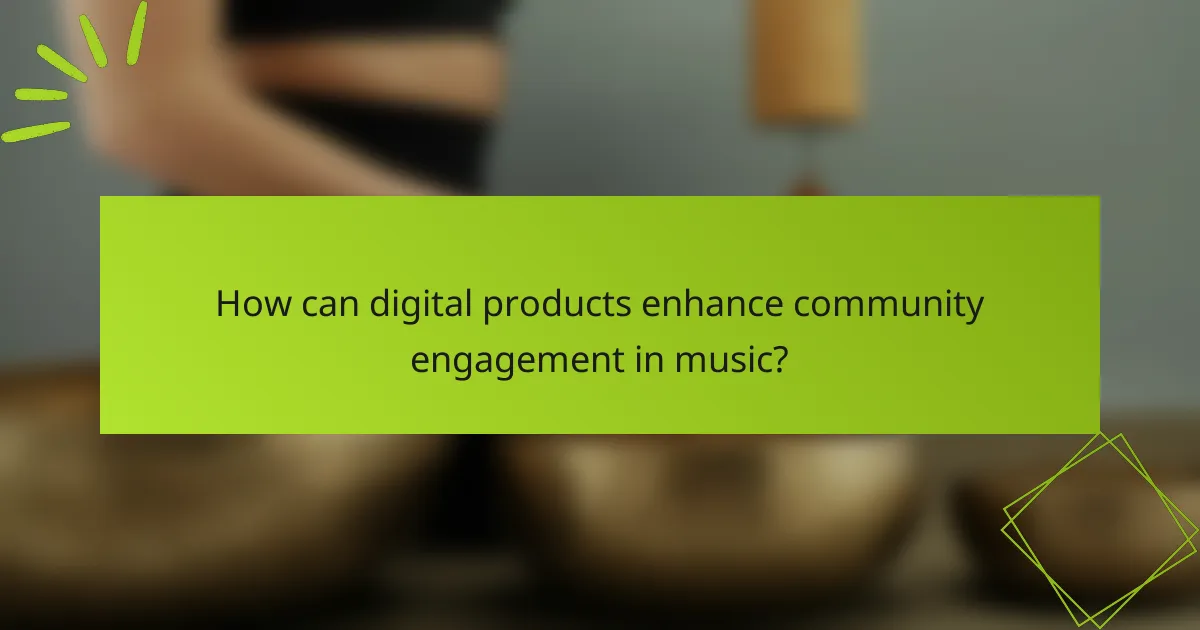
How can digital products enhance community engagement in music?
Digital products can significantly boost community engagement in music by facilitating connections between artists and fans, as well as among fans themselves. These tools create platforms for collaboration, sharing, and interaction, fostering a vibrant local music scene.
Online collaboration tools
Online collaboration tools enable musicians to work together regardless of their physical location. Platforms like Soundtrap and BandLab allow artists to create, edit, and share music in real-time, making it easier to collaborate on projects and share ideas.
These tools often include features like chat functions and project management capabilities, which help streamline communication. Local artists can use these platforms to connect with each other, leading to the formation of new bands or collaborative projects that strengthen the community.
Streaming platforms for local artists
Streaming platforms such as Bandcamp and Spotify offer local artists a way to reach wider audiences while retaining control over their music. By uploading their tracks and promoting them through social media, artists can engage with fans directly and build a loyal following.
Additionally, many streaming services provide analytics that help artists understand their listener demographics and preferences. This data can guide marketing strategies and community engagement efforts, allowing artists to tailor their outreach based on local trends and interests.

What are the best practices for reviewing local music?
Effective local music reviews should prioritize authenticity, community engagement, and artist representation. By focusing on these elements, reviewers can provide insightful critiques that resonate with both the audience and the artists.
Focus on authenticity
Authenticity in music reviews means capturing the genuine essence of the artist’s work. Reviewers should listen closely to the music, considering the artist’s intent, style, and influences. This approach helps to convey a true representation of the local scene.
When reviewing, avoid clichés and generic phrases. Instead, use specific examples from the music, such as unique instrumentation or lyrical themes, to illustrate your points. This not only enhances credibility but also connects with readers who appreciate nuanced analysis.
Highlight community involvement
Local music is often deeply intertwined with its community, so highlighting this involvement is crucial. Reviewers should note collaborations with local artists, participation in community events, or support for local causes. This context enriches the review and showcases the artist’s commitment to their surroundings.
Consider mentioning local venues, festivals, or initiatives that promote the artist’s work. This not only informs readers but also encourages them to engage with the local music scene. Acknowledging these connections fosters a sense of belonging and pride within the community.
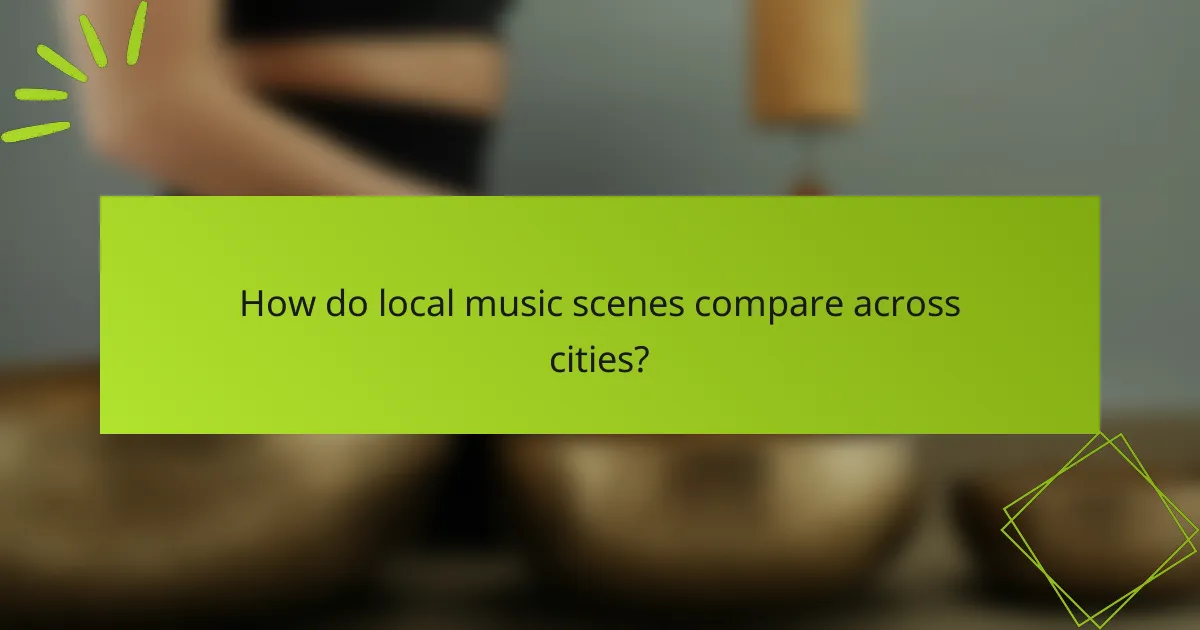
How do local music scenes compare across cities?
Local music scenes vary significantly across cities, influenced by cultural, economic, and social factors. These differences shape artist representation, community engagement, and the overall music experience for audiences.
Case study: Nashville vs. Austin
Nashville and Austin are two iconic music cities, each with a distinct scene. Nashville, known as “Music City,” primarily focuses on country music, with a robust infrastructure supporting artists through labels, studios, and venues. In contrast, Austin boasts a diverse range of genres, including rock, blues, and indie, highlighted by its annual South by Southwest (SXSW) festival, which attracts global attention.
The engagement in these cities also differs; Nashville’s scene is often more commercialized, while Austin emphasizes grassroots movements and local talent. This creates unique opportunities and challenges for artists in each city, influencing their career trajectories and community connections.
Regional genre differences
Regional genre differences play a crucial role in shaping local music scenes. For example, cities like New Orleans are synonymous with jazz and blues, while Seattle is known for grunge and alternative rock. These genres not only reflect the cultural heritage of the area but also impact the types of venues and events that thrive there.
Understanding these regional nuances is essential for artists and fans alike. Artists may find more success by aligning their style with local preferences, while fans can explore a rich variety of sounds that define their city’s identity. Engaging with local genres can enhance community involvement and foster a deeper appreciation for the music scene.
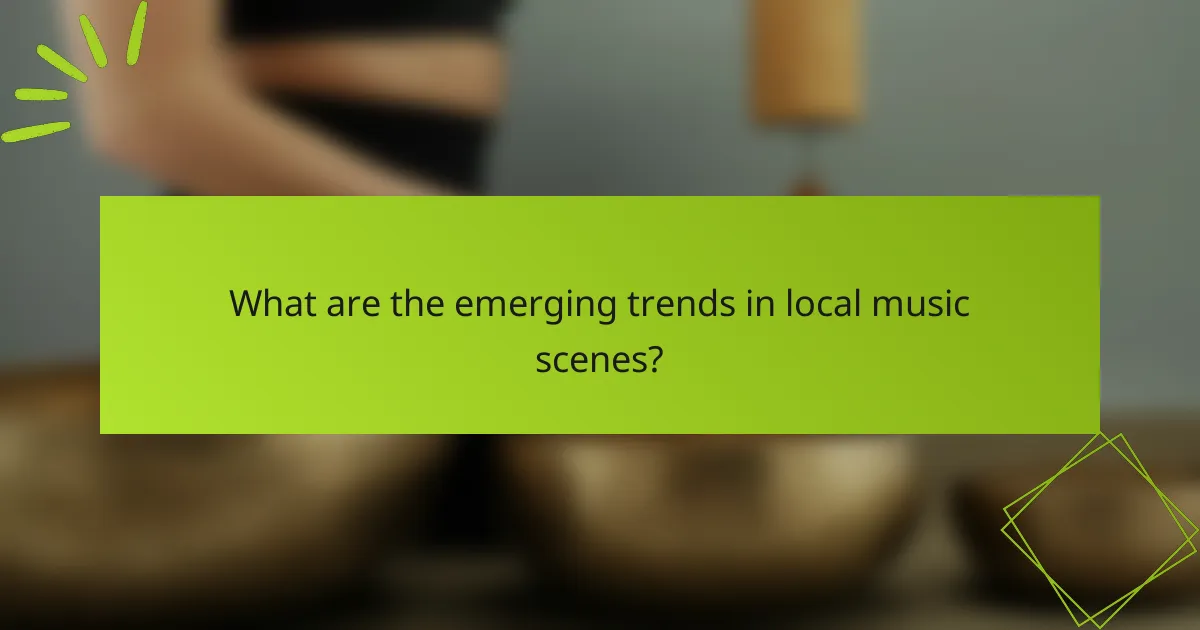
What are the emerging trends in local music scenes?
Emerging trends in local music scenes include the integration of technology, a shift towards inclusivity, and the growth of virtual events. These trends reflect changing audience preferences and the evolving landscape of music consumption.
Integration of technology
The integration of technology in local music scenes is transforming how artists create and share their work. Tools like social media platforms, streaming services, and music production software enable musicians to reach wider audiences and collaborate remotely.
Local venues are also adopting technology, using apps for ticket sales and live streaming performances. This allows fans to engage with their favorite artists in real-time, even if they cannot attend in person.
Shift towards inclusivity
There is a noticeable shift towards inclusivity within local music scenes, with a focus on representing diverse voices and genres. This trend encourages the participation of underrepresented groups, fostering a richer cultural tapestry in music.
Events and festivals are increasingly prioritizing diversity in their lineups, ensuring that various backgrounds and styles are showcased. This not only enhances community engagement but also attracts a broader audience.
Growth of virtual events
The growth of virtual events has become a significant trend in local music scenes, especially following recent global disruptions. Online concerts and festivals allow artists to connect with fans regardless of geographical barriers, making music more accessible.
These virtual events often feature interactive elements, such as live Q&A sessions and chat rooms, enhancing audience participation. While they cannot fully replace the experience of live performances, they provide a valuable alternative that can reach a global audience.

How can artists leverage local music scenes for success?
Artists can successfully leverage local music scenes by actively engaging with their communities, building relationships with fans, and collaborating with other local musicians. This approach not only enhances visibility but also fosters a supportive environment that can lead to greater opportunities.
Building local fanbases
To build a local fanbase, artists should focus on performing regularly at local venues, participating in community events, and connecting with fans through social media. Engaging with the audience during shows and encouraging them to share their experiences can create a loyal following.
Artists can also consider hosting listening parties or small acoustic gigs in intimate settings, which can help foster a personal connection with fans. Offering exclusive content, such as behind-the-scenes footage or early access to new music, can further enhance fan loyalty.
Engaging with the community
Community engagement is crucial for artists looking to establish themselves locally. Collaborating with local businesses, participating in charity events, or hosting workshops can create goodwill and increase visibility. Artists should seek opportunities to connect with local organizations that align with their values and music style.
Additionally, artists can utilize local media outlets, such as radio stations and blogs, to promote their events and share their stories. This can help them reach a broader audience and strengthen their ties to the community.
Collaborating with other artists
Collaboration with other local musicians can be a powerful way to expand an artist’s reach and influence. By working together on projects, artists can tap into each other’s fanbases and create unique content that showcases their combined talents. This can include co-writing songs, performing together, or even organizing joint events.
Artists should be open to diverse genres and styles, as cross-genre collaborations can attract new listeners and create exciting musical experiences. Networking at local music events and utilizing social media platforms can help artists find potential collaborators who share similar goals and visions.
